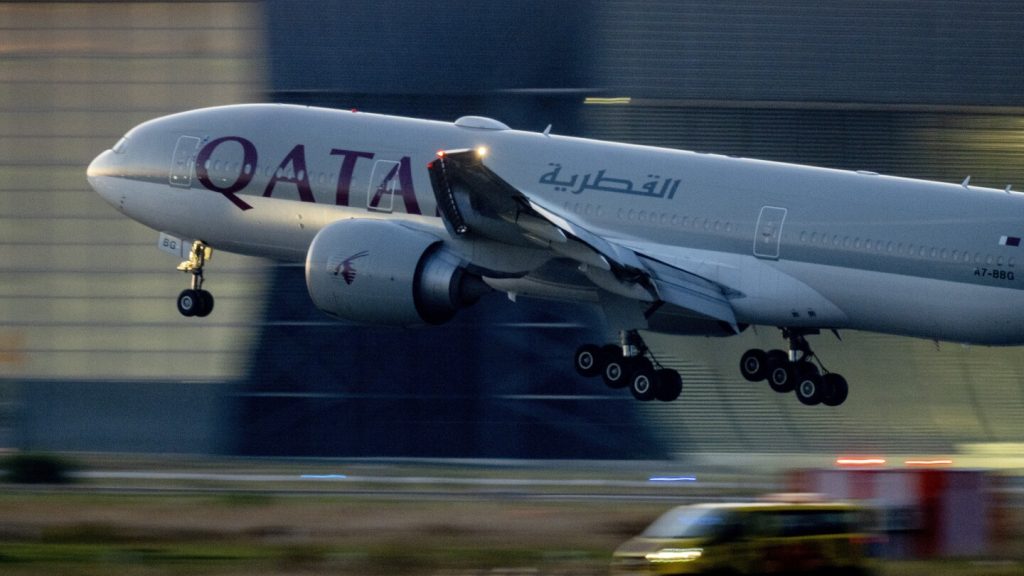The Qatar Airways flight from Doha to Dublin on Sunday experienced turbulence, resulting in injuries to twelve passengers. Eight of the injured individuals were hospitalized upon landing at Dublin Airport. The Boeing 787 Dreamliner landed safely and was met by emergency services, including airport police and fire and rescue departments. The incident occurred while the aircraft was flying over Turkey, causing six passengers and six crew members to report injuries. Passengers described a chaotic scene on board, with people hitting the roof and food and drinks flying everywhere. Some of the flight attendants were seen with scratches on their faces and needing medical attention.
Passenger accounts of the turbulence included witnessing people hitting the roof of the aircraft and objects flying around the cabin. Emma Rose Power described seeing flight attendants with injuries that required medical attention, such as scratches on their faces and one individual wearing a sling on their arm. Qatar Airways confirmed that a small number of passengers and crew sustained minor injuries but are currently receiving medical attention. The airline stated that an internal investigation will be conducted to determine the cause of the incident. This incident comes just days after a British man died from a suspected heart attack on a Singapore Airlines flight that encountered severe turbulence while flying from London.
While turbulence-related fatalities are rare, injuries due to turbulence have been reported over the years. Some experts suggest that reports of turbulence encounters are increasing, potentially due to the impacts of climate change on flying conditions. Aviation analysts and meteorologists have noted the potential implications of climate change on air travel, including the likelihood of encountering more turbulence during flights. As such incidents continue to occur, airlines and aviation authorities may need to implement additional measures to ensure the safety and well-being of passengers and crew during flights. The aviation industry will need to remain vigilant in addressing the challenges posed by changing weather patterns and their effects on flying conditions.


